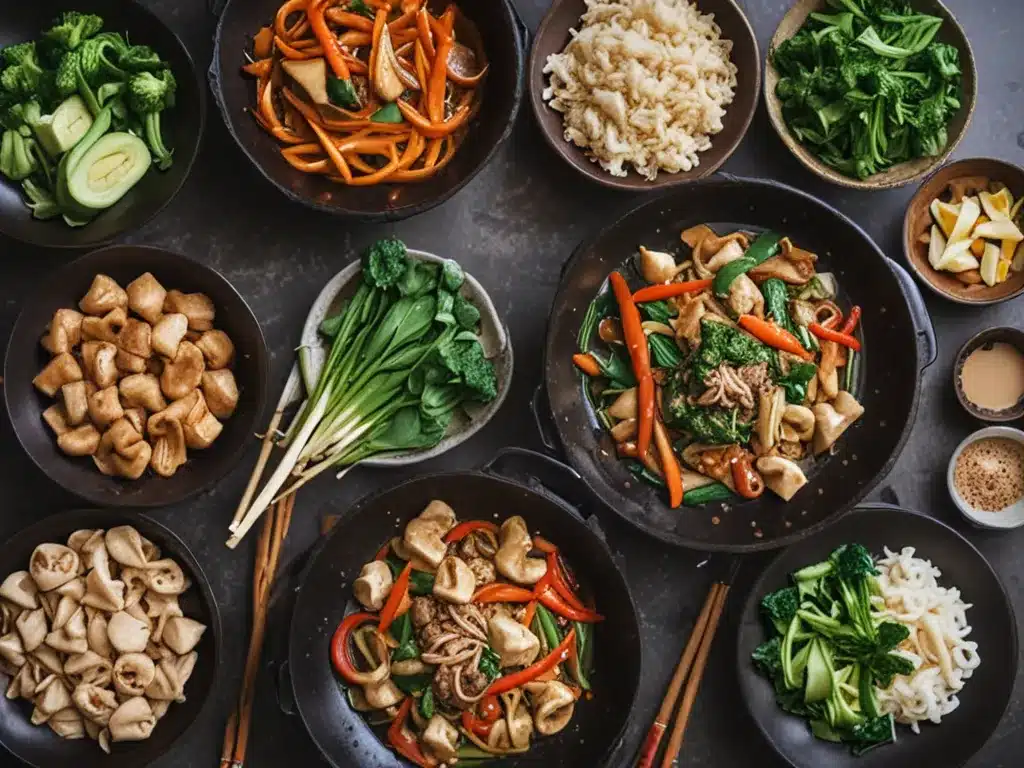
Introduction
As wok cooking becomes increasingly popular for its versatility and the ability to cook food quickly, many home cooks wonder whether steaming or frying is a healthier option when using a wok. Both steaming and stir-frying (frying) are common wok cooking techniques, but each method impacts the nutritional content and calorie count in different ways. In this article, I will break down the key differences between steaming and frying foods in a wok, including the health benefits and drawbacks of each. I will also provide some tips for choosing healthier methods and ingredients.
Nutritional Differences Between Steamed and Fried Foods
When comparing the nutritional profile of steamed versus fried foods, there are a few main differences to highlight:
Fat and Calorie Content
h3 Fat and Calorie Content
As you may expect, frying generally adds more fat and calories to dishes than steaming. When stir-frying or shallow frying in oil, the oil used is absorbed into the food. Most recipes will call for 1-2 tablespoons of oil for stir-frying a meal in a wok. Meanwhile, steaming involves no added fat or oil at all. The absence of frying oil makes steamed foods lower in total fat and calories.
h3 Nutrient Retention
Steaming is also better than frying at retaining nutrients in foods like vitamins, minerals and phytonutrients. When vegetables are stir-fried or deep fried, some heat-sensitive nutrients may be lost to the cooking oil or destroyed by the high temperatures. Steaming gently cooks the food without losing much nutrition to draining liquid or exposure to excess heat.
h3 Caramelization and Browning
On the other hand, frying is associated with the Maillard reaction – the browning process that occurs with high heat cooking of proteins and sugars. This leads to the development of flavorful new compounds. While some argue this enhances digestion, browning has also been linked to the formation of potentially harmful substances. In general, steamed foods lack the depth of flavor from caramelization and browning compared to their fried counterparts.
Health Effects of Steaming vs. Frying
Now let’s summarize some of the main health effects that may differ depending on a wok cooking method:
h2 Heart Health
Frying adds more saturated and trans fats from oil to dishes compared to steaming. Excess saturated fat intake is linked to higher LDL (“bad”) cholesterol levels and increased risk of heart disease. Trans fats are especially unhealthy and should be avoided. Overall, a diet low in saturated and trans fats promotes heart health.
h2 Weight Management
The extra fat and calories provided by frying can easily add up and disrupt weight control efforts. Meanwhile, steaming retains flavor and nutrients while keeping fat and calories very low. Choosing steamed preparations more often supports healthy weight management.
h2 Disease Prevention
Many vegetables and whole foods contain disease-fighting antioxidants and polyphenols that are best retained through gentle cooking methods like steaming. Frying has been linked in some research to increased inflammation and production of potentially harmful substances. From a disease prevention perspective, steaming may provide advantages over deep frying.
h2 Diabetes Risk
Frying food adds more fat and calories, which are risk factors for developing type 2 diabetes. The Maillard reaction from frying may also generate glycosylated proteins that could potentially influence blood sugar levels, though more research is needed. Steaming helps control calorie and fat intake for better diabetes management and prevention.
Tips for Healthier Wok Cooking Methods
With some adjustments, wok cooking can still offer the convenience of quick cooking while prioritizing nutrition and health. Here are some tips:
h3 Stir-fry instead of deep frying
Stir-frying with minimal oil, about 1 tsp per serving, is a lower fat cooking method than deep frying foods. The constant motion prevents burning and absorbs less oil than allowing foods to simmer in an inch or more of cooking oil.
h3 Use healthy oils for stir-frying
Oils higher in monounsaturated and polyunsaturated fats like avocado, olive, peanut or toasted sesame oil are better choices than coconut or palm oil which are high in saturated fat.
h3 Marinate instead of breading proteins
Marinating meat and seafood in acids, herbs and spices adds flavor without the need for breading or batter before pan-frying. This way less oil is absorbed.
h3 Steam proteins and vegetables first
Partially steaming protein and vegetables before stir-frying finishes them allows using less oil overall in cooking. The food is already partially cooked before adding oil to the wok.
h3 Replace oil with other liquids
For some dishes, broth, wine or other liquids can work in place of oil for steaming foods in the wok without adding unnecessary fat or calories.
h3 Use a skillet for some cooking
A skillet provides an alternative to deep wok frying. It permits stir-frying foods over medium-high heat using minimal oil for a lighter cooking method.
In conclusion, steaming is generally the healthier wok cooking method compared to frying or stir-frying. However, with modifications like those discussed, stir-frying can still be part of a nutritious diet. The key is using cooking methods that retain the most nutrients in whole foods while limiting added fats, oils, calories and other components linked to chronic disease risk.






